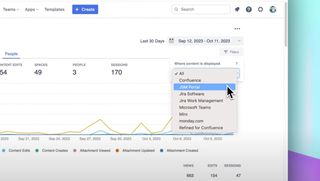Atlassian Confluence is a powerful tool for knowledge management and collaboration, but like any tool, its effectiveness depends on user adoption. But if your team isn't using Confluence regularly, then you won't be able to reap its full benefits. In this article, we'll explore six ways to improve user adoption for Atlassian Confluence.
Provide training and resources
One of the most important things you can do to improve user adoption is to provide training and resources for your team. This can include online tutorials, how-to guides, and webinars. By providing your team with the knowledge and skills they need to use Confluence effectively, you'll increase their confidence and motivation to use the tool.
There is an impressive collection of training courses, often for free, at Atlassian University.
Encourage feedback
Encouraging feedback from users can help you identify areas of improvement and address issues. Use an app such as Forms & Surveys in Confluence to set up feedback mechanisms like surveys, feedback forms, and polls to collect user feedback.
Foster a collaborative culture
Confluence is all about collaboration, so it's important to create a culture that values and encourages teamwork. This can include setting up team goals, creating opportunities for brainstorming sessions, and fostering a positive team environment where everyone feels comfortable sharing their ideas.
Start small
If your team is new to Confluence, it's a good idea to start small. Don't overwhelm them with too much information at once. Instead, focus on a few key features and gradually introduce additional functionality as your team becomes more comfortable with the tool.
Promote transparency
Transparency is key to successful collaboration, and Confluence makes it easy to share information across teams and departments. By promoting transparency and encouraging team members to share their work, you'll create a more open and collaborative culture.
It is best to keep a very open permission model for Confluence so that people can serendipitously discover information outside of their particular team and focus. Only lock down permissions where secrecy is absolutely necessary.
Integrate Confluence with other tools
Integrating Confluence with other tools your team uses can make it more convenient to use. Out-of-the-box, Confluence is integrated with Jira, a powerful project management system. You can also integrate it with Slack or Microsoft Teams to get notifications and updates in real-time.
The Atlassian Marketplace has a wealth of impressive integrations and ways of extending the core Confluence functionality.
Measure and track adoption
Tracking adoption is crucial to identify areas of improvement and measure the success of your Confluence adoption efforts. Users of the premium and enterprise edition can use Confluence's built-in analytics and reporting tools to measure user activity and identify usage patterns.
For free and standard editions (and in fact all editions), third-party analytics apps such as Google Analytics in Confluence provide the perfect alternative.
Lead by example
Finally, it's important to lead by example. If your team sees that you're using Confluence regularly and finding value in the tool, they'll be more likely to follow suit. Encourage other team members to share their work, collaborate, and use Confluence to stay organised and efficient.
Improving user adoption for Atlassian Confluence takes time and effort, but it's well worth it. By providing training and resources, creating a culture of collaboration, starting small, customising your instance, promoting transparency, and leading by example, you'll be able to get your team using Confluence regularly and reaping the full benefits of this powerful tool.
Photo by CoWomen on Unsplash






